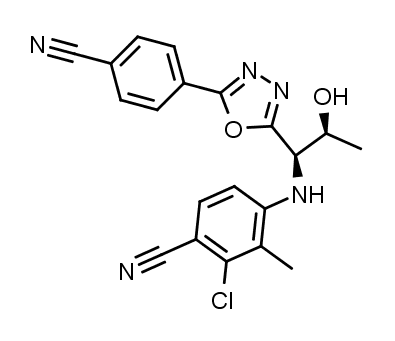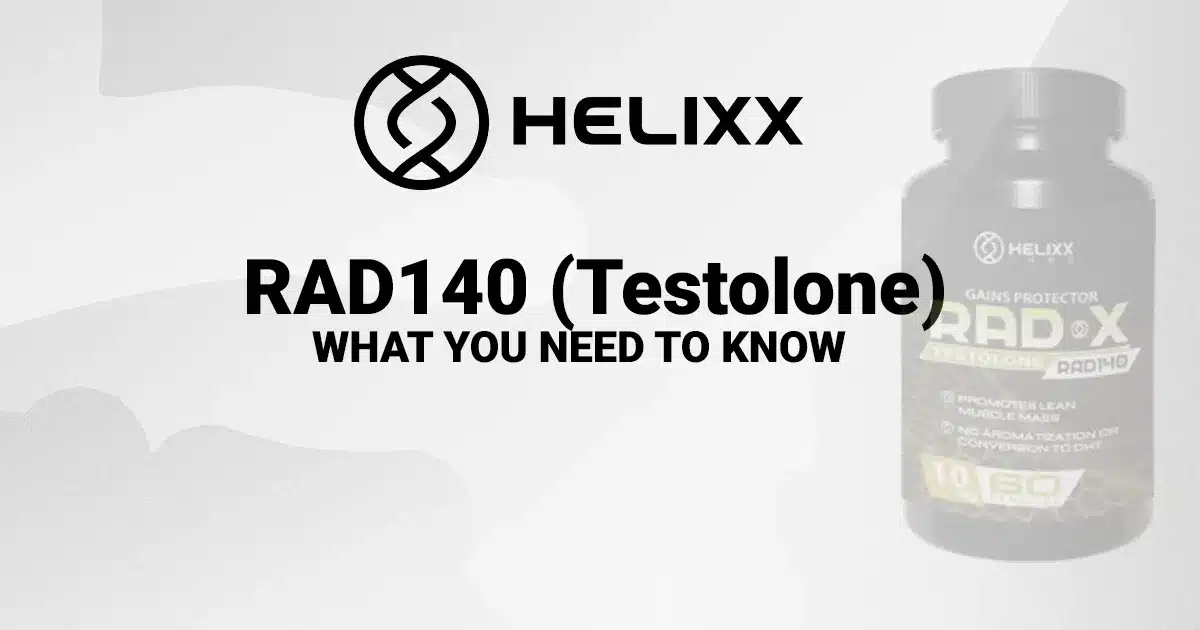In the ever-evolving world of health and fitness, Canadians are continually seeking new and effective ways to enhance their physical capabilities and overall well-being. Among the myriad of options available, Selective Androgen Receptor Modulators, commonly known as SARMs, have emerged as a topic of significant interest. These powerful compounds offer the promise of steroids—like muscle growth and fat loss—without some of the more undesirable side effects.
One SARM in particular, RAD140, also known as Testolone, has garnered considerable attention. But what exactly is RAD 140, and how does it work within the human body? This article aims to demystify RAD 140, delving into its mechanism of action, the potential benefits it offers, its dosage, side effects, and the real results users can expect. Whether you’re a fitness enthusiast, a curious newcomer, or simply seeking to broaden your knowledge, this comprehensive guide will provide valuable insights into the world of RAD 140 SARM.
Table Of Contents
What is RAD 140 SARM?
RAD 140, also known by its chemical name Testolone, is a Selective Androgen Receptor Modulator (SARM) that has been gaining popularity, particularly within the Canadian fitness and bodybuilding communities. But what sets RAD 140 apart from other fitness supplements, and why is it the subject of such intense interest?
Origins and Development
Initially developed for medical use, RAD 140 was intended to provide a safer alternative to testosterone replacement therapy. It was primarily researched for its potential in treating conditions like muscle wasting and osteoporosis. The unique aspect of RAD 140, and SARMs in general, is their selective action. Unlike traditional steroids, which have a broad range of effects on various tissues, RAD 140 selectively targets muscle and bone tissues. This selectivity aims to reduce the likelihood of steroid-like side effects, making it a subject of interest for not only medical use but also for athletes and bodybuilders.
Chemical Composition and Function
Chemically, RAD 140 is designed to mimic the effects of testosterone, a naturally occurring hormone in the human body known for its crucial role in muscle growth, bone density, and overall physical performance. By binding selectively to androgen receptors in muscle and bone tissues, RAD 140 triggers anabolic processes, which are essential for muscle building and skeletal health. This selective binding is what makes RAD 140 an attractive option for those looking to enhance their physical performance without the extensive side effects associated with traditional anabolic steroids.

How Does RAD 140 Work in the Body?
Understanding the mechanism of RAD 140 in the body is key to comprehending its potential impact on health and fitness. This SARM operates in a targeted manner, distinguishing it from conventional anabolic steroids.
Binding to Androgen Receptors
The primary action of RAD 140 is its interaction with androgen receptors, which are found in various tissues throughout the body but are particularly concentrated in muscle and bone cells. Unlike testosterone and traditional steroids that bind to these receptors indiscriminately, RAD 140 is designed to selectively target muscle and bone tissues. This selective binding is thought to amplify the muscle-building effects while minimizing unwanted side effects often associated with steroids, like hormonal imbalances and liver toxicity.
Muscle Growth and Strength Enhancement
Once RAD 140 binds to the androgen receptors in muscle tissue, it stimulates muscle growth by enhancing protein synthesis – the process by which cells build proteins, the building blocks of muscle. This not only aids in muscle growth but also contributes to increased strength. For athletes and bodybuilders, this translates into improved performance and faster recovery times after strenuous workouts.
Potential Impact on Fat Loss
Another intriguing aspect of RAD 140’s action is its potential role in fat loss. While the primary focus of RAD 140 is on muscle growth, some studies suggest that it might also aid in reducing body fat. This could be due to its anabolic effects which not only build muscle mass but also potentially increase metabolic rate, leading to more efficient fat burning.

Dosage and Administration of RAD 140
When considering the use of RAD 140, understanding the appropriate dosage and method of administration is crucial. This section will cover the general guidelines and considerations for those interested in RAD 140, but it’s important to note that individual needs and responses can vary.
Recommended Dosages
The optimal dosage of RAD 140 can depend on several factors, including the individual’s goals, experience with SARMs, and overall health. Generally, dosages range from 10 to 20 mg per day. Beginners are often advised to start at the lower end of this spectrum to assess their tolerance. More experienced users may opt for higher dosages, but it’s important to understand that increasing the dose can also increase the risk of potential side effects.
Administration Methods
RAD 140 is typically available in oral form, either as capsules or liquid. This mode of administration makes it more user-friendly compared to injectable anabolic steroids. The oral form allows for easy dosage measurement and is more convenient for most users, which is why Helixx Online offers our SARMs in Oral capsule form.
Cycle Length
A typical RAD 140 cycle lasts between 6 to 8 weeks. It’s generally recommended not to exceed 8 weeks, as longer cycles might increase the risk of side effects and put greater strain on the body. After completing a cycle, a break or ‘off-cycle’ period is crucial to allow the body to recover and maintain a hormonal balance.
Dosage Variations for Different Purposes
It’s worth noting that the dosage might vary depending on the user’s objectives:
- For bodybuilding or muscle gain, higher doses towards the 20 mg range are common.
- For those using RAD 140 for its potential fat loss or endurance benefits, a lower dose may be sufficient.
Potential Side Effects of RAD140
While Testolone is often regarded for its muscle-building benefits with fewer side effects compared to traditional anabolic steroids, it’s important to understand the potential risks and adverse reactions associated with its use. Awareness and caution are key when considering any supplement, especially those that impact hormonal balance.
Hormonal Imbalances
One of the primary concerns with RAD 140, as with other SARMs, is its impact on natural hormone levels, particularly testosterone. RAD 140 can suppress the body’s natural testosterone production, leading to a hormonal imbalance. This can result in symptoms like fatigue, mood swings, and decreased libido. Post-cycle therapy (PCT) is often recommended to help restore natural hormone levels after a RAD 140 cycle.
Why PCT is Necessary
- Hormonal Balance Restoration: RAD 140, like other SARMs, can suppress the body’s natural production of testosterone. PCT is designed to help the body restore its natural hormone levels after a cycle of RAD 140. This restoration is vital for maintaining health and well-being post-cycle.
- Preventing Potential Side Effects: Without proper PCT, users of RAD 140 may experience prolonged side effects related to low testosterone levels, such as fatigue, mood swings, and a decrease in muscle mass. PCT helps mitigate these effects by aiding the body in returning to its normal hormonal state.
Components of Effective PCT
- Selective Estrogen Receptor Modulators (SERMs): These are often the cornerstone of PCT. Drugs like Tamoxifen (Nolvadex) and Clomiphene (Clomid) are commonly used to stimulate natural testosterone production.
- Natural Supplements: Supplements such as Vitamin D, Zinc, and Magnesium can also support the body’s hormonal balance and overall health during PCT.
Duration and Timing of PCT
- The length of PCT can vary but typically lasts between 4 to 6 weeks, depending on the RAD 140 cycle length and the individual’s response.
- It’s generally recommended to begin PCT immediately after the RAD 140 cycle ends to prevent any prolonged period of hormonal imbalance.

Results and Expectations from Using RAD 140
For individuals considering RAD 140, it’s important to have realistic expectations about the results and the time frame in which they can be achieved. This section delves into what users might expect from a RAD 140 cycle in terms of muscle gain, strength, and overall physical performance.
Muscle Mass and Strength Gains
- Significant Muscle Growth: One of the primary reasons for RAD 140’s popularity is its potent ability to enhance muscle growth. Users often report significant increases in lean muscle mass, particularly when combined with a rigorous training regime and a protein-rich diet.
- Increased Strength: Alongside muscle growth, RAD 140 can lead to noticeable improvements in strength. This can translate to enhanced performance in various physical activities and exercises.
Enhanced Recovery and Endurance
- Faster Recovery Times: RAD 140 can help reduce the recovery time needed between workouts. This means users can train more frequently and intensely, potentially leading to faster and more significant results.
- Improved Endurance: Some users also report improved endurance, which can be beneficial for both strength training and cardiovascular activities.
Fat Loss
- While not primarily used for fat loss, RAD 140 may aid in reducing body fat as a secondary effect. This is possibly due to the increased muscle mass, which can boost the metabolic rate and enhance fat burning.
Individual Variability in Results
- It’s crucial to understand that results can vary greatly from person to person. Factors such as genetics, diet, exercise routine, and overall lifestyle can influence the effectiveness of RAD 140.


